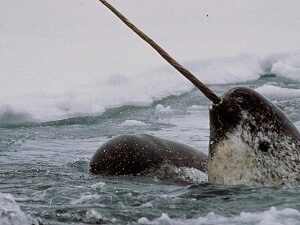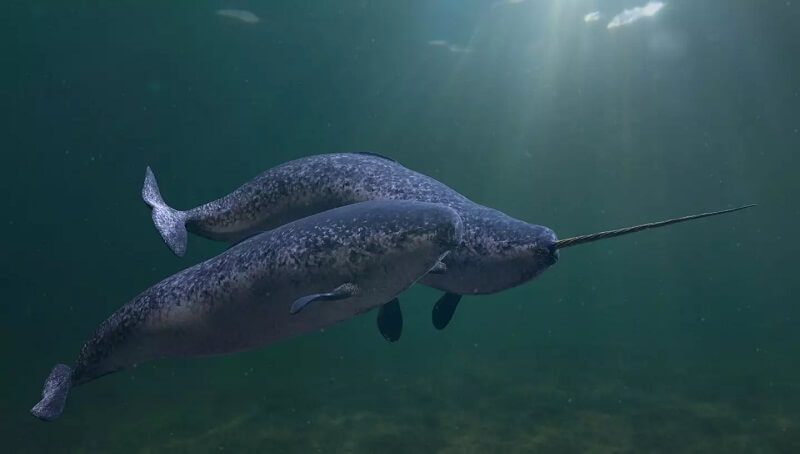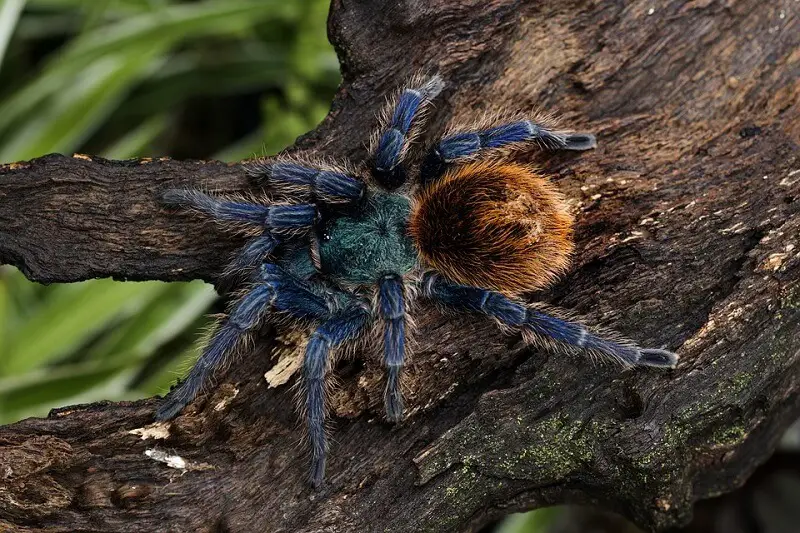Its Origin
The Narwhal, with its scientific name Monodon Monoceros, is part of the Monodontidae family. It is a marine animal that lives all year round in the Arctic Ocean.
It was first seen in the waters of northern Canada and Greenland. It can be found in Arctic and subarctic waters, near the glaciers from these areas, and in northern Russia. It is the only representative of its family.
The narwhal was called “qilalugat tugaliit” by former Arctic inhabitants. They appreciated it more than walruses and seals because whoever managed to capture a specimen could feed his tribe for a few weeks. At first, it was believed that the narwhal had a horn on its head and was called the “unicorn of the seas”. Later it turned out to be a tooth.
Aside from their unique appearance, the narwhal is said to have been the model of the famous unicorn, so evoked in the Middle Ages.
Although it is related to whales, it does not resemble them very much. It is a cetacean with teeth, Odontoceti, but it does not resemble the dolphins or whales that we know because it is different, it is unique.
The narwhal stories and myths were shattered by the English-born zoologist Ole Wurm, in 1683, who made the existence of narwhals public. The scientific name of Monodon Monoceros means “a tooth, a horn” and refers to its two-meter-long adornment. In literature, it can be found under the name narwhal or narwhale.
The narwhal’s situation is very delicate. Mortality increases due to climate change and pollution. The sad part is that they do not survive in captivity, and in freedom, the number of narwhals is 10.000 to 20.000 specimens in some documentation, or 75.000 specimens according to others.
You might also like my articles with interesting facts about manatees, dolphins, and frogfish.
However, the number is small compared to the specimens that should populate the ocean. As far as I understand, the Canadian and Norwegian governments still allow the hunting of these animals.
Food
The food of the narwhals is very varied. We can say that they have a very varied aquatic menu. They quench their hunger with shrimp, fish that swim in shoals, cephalopods, Arctic code, or fish from higher depths, such as plaice.
There have also been found stones in their stomachs, that are believed to have accidentally been swallowed when feeding on fish.
One of the supposed feeding methods is getting close enough to the prey so it can be sucked into the mouth.
Appearance
The narwhals have a maximum length of 5 meters and a weight of 1.5 to 1.8 tons. Females are smaller than males, they do not exceed 4 meters and weigh 1 ton.
Reproductive dimorphism can be easily established, not because of the physical resemblance, but because only the males have the bone tooth. There is a chance that one in 500 narwhals will have two teeth. The tooth is located on the upper jaw and is twisted like a drill.
Due to the long tooth, a number of medieval legends of the unicorn were born. The tooth can reach a length of 2m and weighs around 10kg. It is used to impose itself on other narwhals, but also as a weapon. Only males have such a long tooth, the one of females being much smaller.
For Eskimos a narwhal a is highly appreciated meal. Everything is consumed, and nothing is thrown away. Skin and fat are eaten raw and are considered delicacies.
Bones are used for making art objects. Eskimos in western Greenland still hunt narwhals. The luck of the narwhal is that it lives in areas where it is difficult to reach, otherwise, it would probably be an extinct species. From its tooth, people made, besides decorative objects or objects for various rituals, various weapons as well, such as harpoons or spears.
Their imposing appearance, with the “horn on the forehead”, has led many to believe that it is a ferocious animal. The name from the old Norwegian language means “corpse”. They were wrong, as narwhals, despite their appearance and size, are withdrawn and shy.
Behavior
Narwhals live in groups of up to ten individuals. The groups are formed according to age and gender. Males can be seen very easily, due to their long tooth, as they fight on the surface of the water.
Many believe that the tooth, or horn, as some call it, is the pride of the animal such as the lion’s mane or the tail of the peacock because it is hardly used in fighting or in breaking the ice. It may not be very well attached to the base and may break, or it may hurt, so they use it only in extreme situations.
Although the tooth is considered a lethal weapon, the narwhal prefers to sink to great depths to escape the attack of whales or polar bears. They are the only predators of the narwhal.
They migrate by following established exact routes. They spend their summer in shallow waters without ice. During winter, the narwhal prefers deep waters covered by large blocks of ice. They are known for their extreme survival.
In one study, they impressed with their ability to descend to depths where other cetaceans do not venture. Narwhals make some of the deepest dives in the ocean. In winter they descend to depths of 800 meters up to 15 times a day. They were also seen at 1500 meters deep.
They use echolocation to create a “map” of the environment. The signals they send are so sophisticated that they can identify holes in the thick ice sheet that covers Arctic waters, from tens of meters away. These holes are vital because they need to breathe every half an hour or so.
It is said that the ones who see a narwhal in its natural habitat will never forget it, due to its rarity and uniqueness.
Reproduction
 The period of reproduction and birth occurs in spring when food is abundant. During the warm period when the groups gather, the males establish their hierarchies. It is said that the narwhal is a quiet and peaceful animal. Even if it establishes its hierarchies and fights for supremacy, it does so in a quiet way by displaying its capillary adornment.
The period of reproduction and birth occurs in spring when food is abundant. During the warm period when the groups gather, the males establish their hierarchies. It is said that the narwhal is a quiet and peaceful animal. Even if it establishes its hierarchies and fights for supremacy, it does so in a quiet way by displaying its capillary adornment.
The longer their teeth are, the more potent they are. Males use their appearance to attract their partners. The female reaches reproductory maturity around the age of 5. It does not form durable pairs, so each reproduction can have a different partner.
After the breeding period, females give birth in the spring between April-May to a single offspring. Every female gives birth once every 2-3 years and the gestation period lasts 14 months.
After birth, the baby follows the mother for a period of time, during which it is fed the fatty maternal milk it needs to survive in the northern waters. The baby measures 1.6 meters at birth and has a dark gray color.
The life expectancy of the narwhal is around 50 years.
Facts
It has a tooth that is 2m long and 10kg heavy.
It can sink to record depths of 1000 meters.
The narwhal is still hunted by Eskimos, and if it is caught, they consume everything from it, nothing is thrown away.
It has only two natural predators: The orca and the polar bear.
The tooth of a narwhal is valued at $1000 to $2000 or more depending on its size.
The narwhal was the inspiration for Jules Verne in his famous opera “Twenty thousand Leagues under the Sea”.




